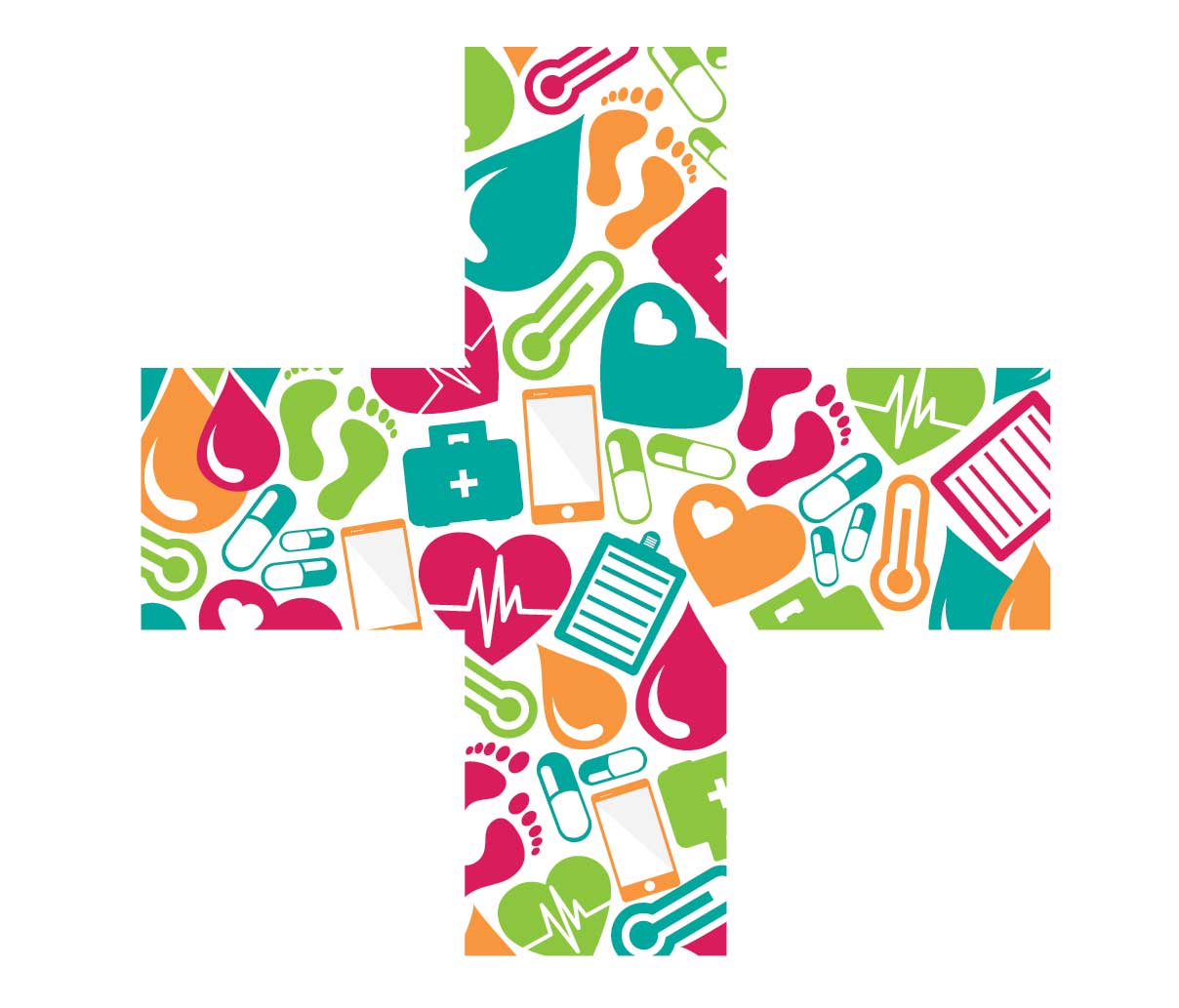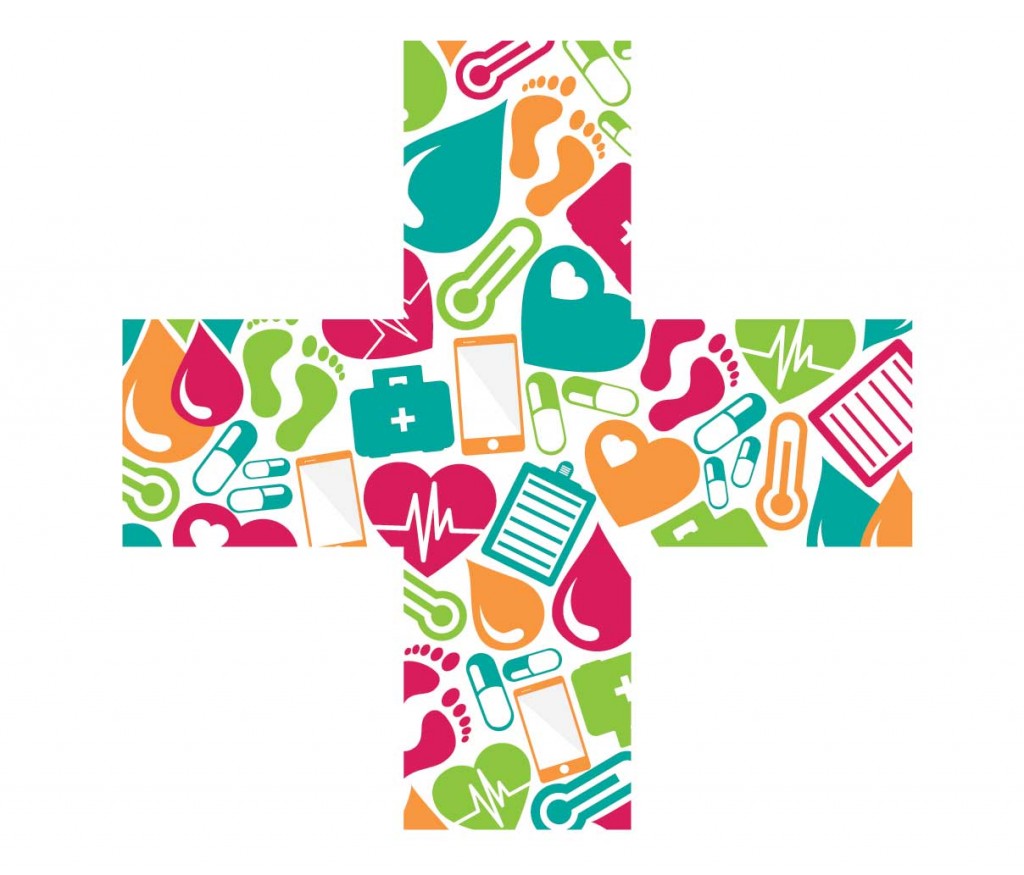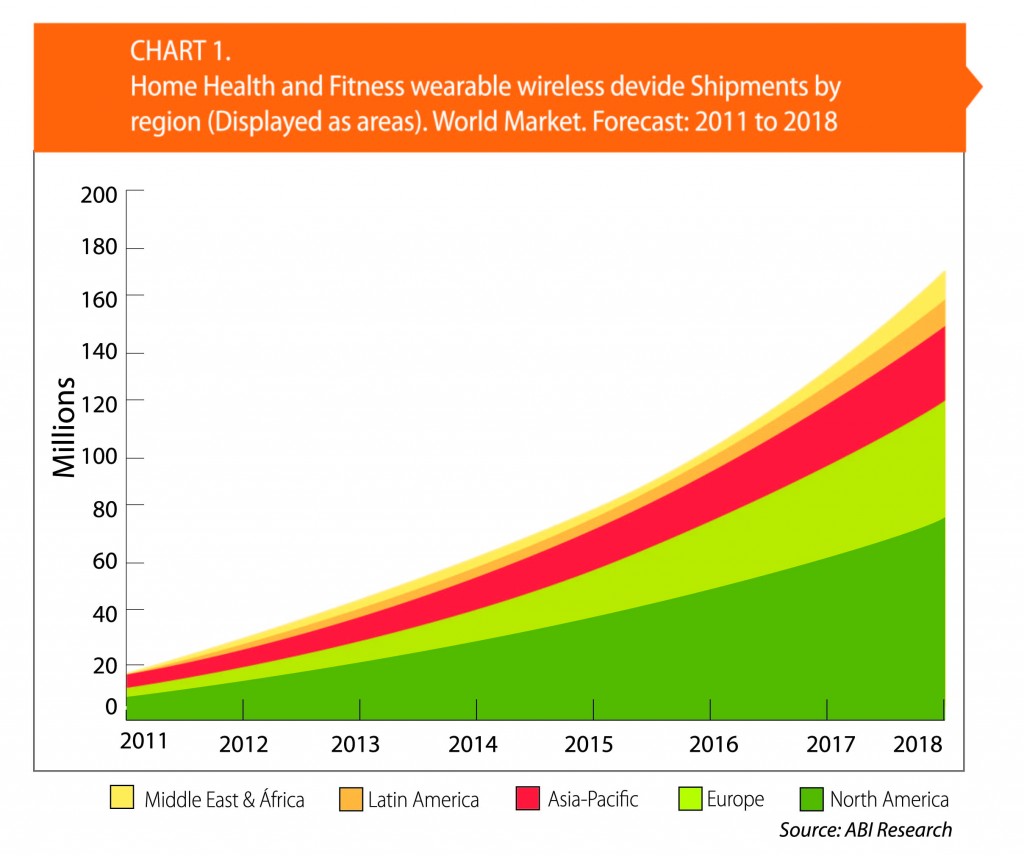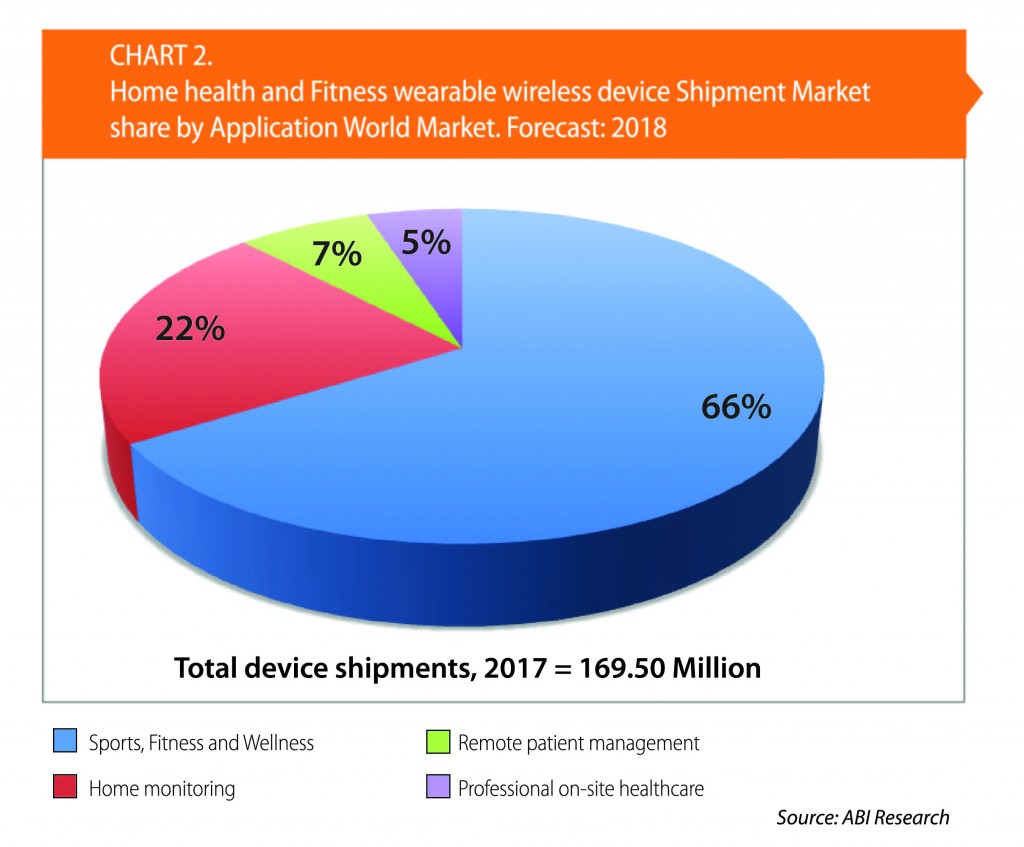The mHealth industry is growing rapidly due to the increase in smartphone ownership and interest in using them to keep track of your health. Aging population and growing incidences of diseases linked to changing lifestyles have intensified the need for affordable and accessible healthcare. As a result, investors are betting on this market and continuing to develop innovative porducts.
Over the next six years, the global mHealth market will continue to make a mark in a serious way, with the industry poised to exceed $49.1 billion by 2020.
As shown in the chart below: globally, this market is expected to triple in size every four years, selling more than 160 million units by 2018.
Most of the market share will be in Europe and the Asia-Pacific regions with 30% of share each, followed by North America with 28%.
Activity Monitoring Dominated Wearable Wireless Devices
Two thirds of the mHealth market is represented by devices used for sports, fitness and personal health and wellness. As shown in the chart below:
Fitness tracking technology could monitor activity levels and provide a nudge to indicate when to rest or when to push activities, like AM3 iHealth.
The iHealth Wireless Activity and Sleep Tracker is a device that tracks the daily activity and sleep. It uses Bluetooth 4.0 with low energy technology and is sweat, rain and splash proof.
46% of people who tracked their health say that this activity has changed their overall approach to maintaining their health or the health of someone for whom they provide care – Pew Research Center’s Internet & American Life Project 2013.









